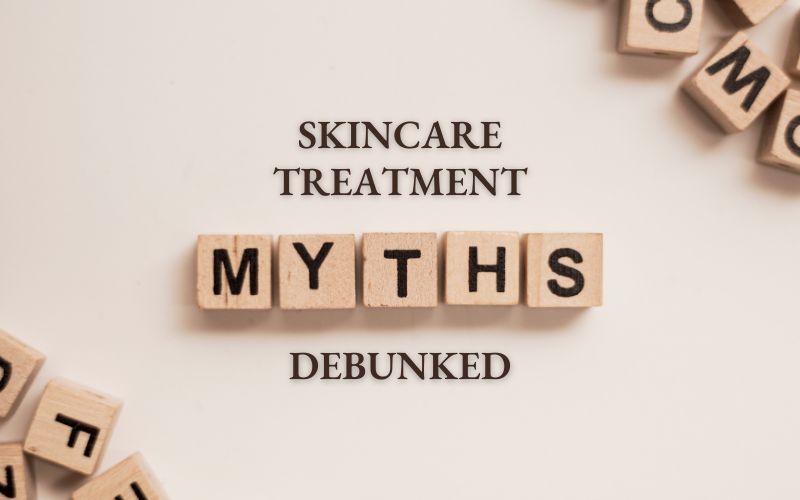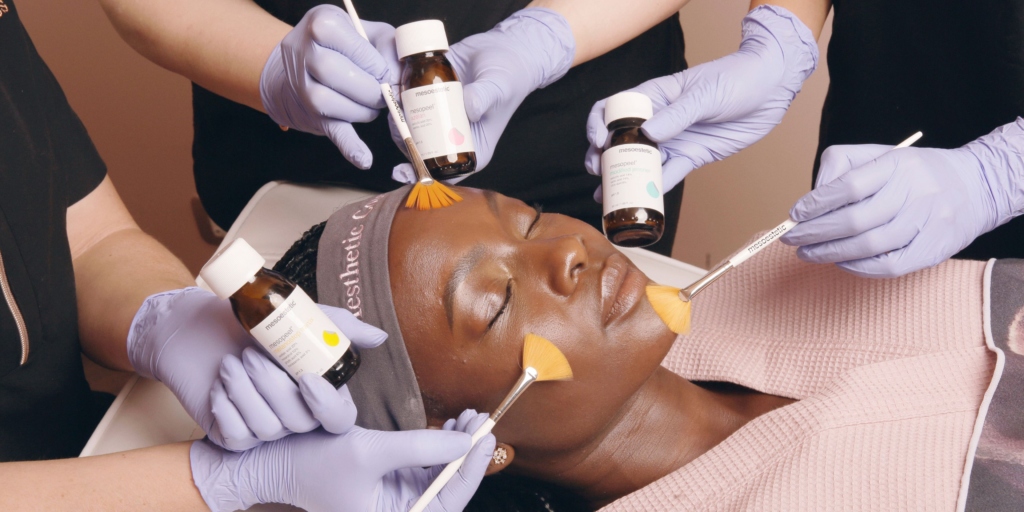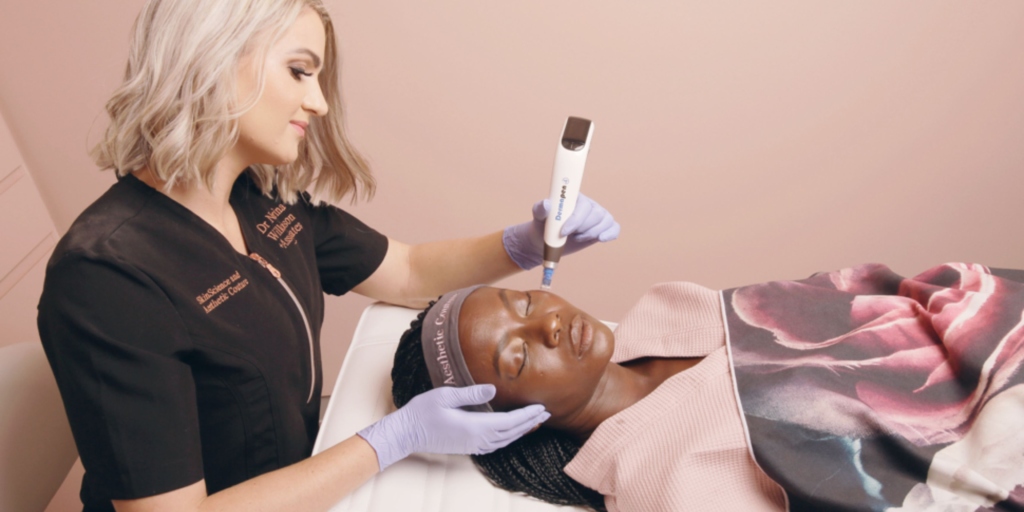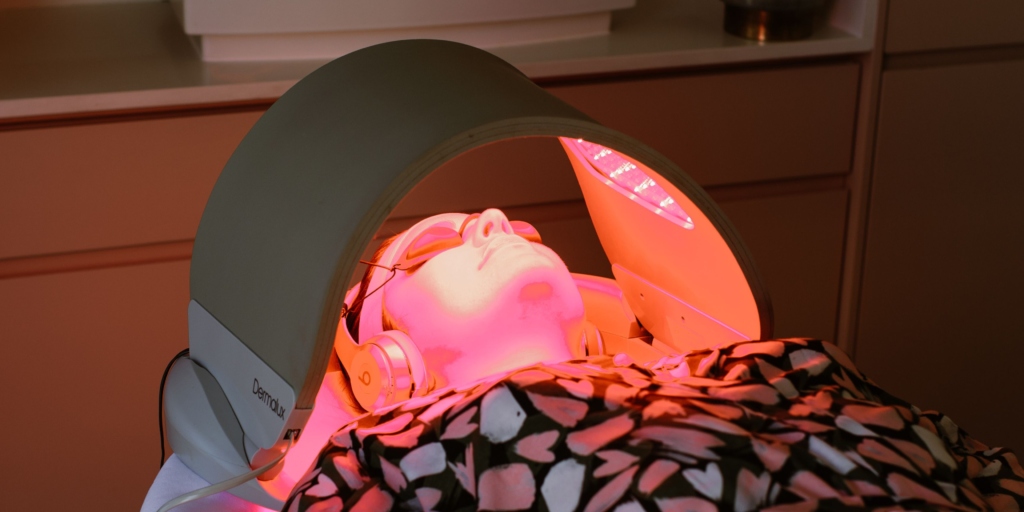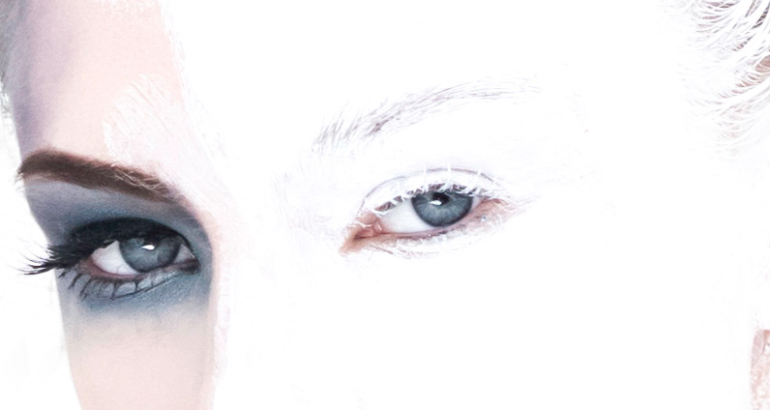by Senior Skincare Specialist, Louné Maree
Nowadays the media is flooded with new skincare trends and fads. This can be very deceiving to the consumer as these gimmicks are often not based on scientific evidence… Due to misinformation, the risk of skin irritation, allergies, and extreme health issues increases and often ends with undesirable results.
So, when it comes to your skincare routine at home or professional skin treatments it is of the utmost importance that both your at-home routine and your in-clinic treatments should always be supported by scientific evidence to reduce the chances of an adverse reaction or negative side effects and to help produce consistently beautiful skincare results.
To help you make more informed skincare choices, we are debunking the top 10 skincare myths in today’s blog.
1. More expensive skincare treatments always yield better results
There is a misconception that the higher the price tag of a skin treatment, the greater the results. This can be very misleading as everyone’s skin is unique and can present various challenges. The high-end skin treatment that your friend is doing is not necessarily suitable or beneficial for you.
When it comes to professional skincare treatments, don’t let the price tag deceive you. A simple (yet effective) superficial chemical peel can be very beneficial as studies have shown that chemical peels stimulate the regeneration of crucial tissues resulting in firmer, smoother skin and a fresh-faced glow.
When investing in regular superficial chemical peel treatments, the results can be astounding! Together with a consistent and affordable treatment plan, one should also have a robust home care regime to enhance and sustain skin quality post-treatment.
2. All chemical peels are the same
So many peels which one to choose?
That question could only be answered after a thorough skin analysis by a skincare specialist. Depending on the skin type and skin conditions that need to be addressed a decision can be made as to the ideal chemical peel solution for the specific skin needs.
Superficial chemical peels are time-dependent peels that work only on the surface of the skin, to remove dead skin cells, promote cell turnover, and give the skin a beautiful glow. And there are many different types of superficial peels available to target very specific concerns.
Medium-depth peels penetrate the deeper layers of the skin to target a specific skin condition, such as Me Line Chemical Peels for the treatment of Melasma or post-inflammatory hyperpigmentation (which is pigmentation found in the deeper layers of the skin). This chemical peel will lift the pigment to the surface causing skin peeling to improve uneven skin tone. Another medium-depth peel we love is the Acnelan Peel. When it comes to oily or acneic skin I highly recommend this peel as the combination of salicylic, shikimic, and mandelic acid decreases sebum production, controls bacterial proliferation, reduces redness, and lightens areas of post-inflammatory hyperpigmentation. In this category we also get TCA Peels (Trichloroacetic Acid) which are layer-dependant peels; the more layers you apply the deeper the peel penetrates. TCA Chemical Peels are excellent for the treatment of poor skin texture, enlarged pores, and fine lines.
We then get deep phenol peels which should only be done by a medical doctor. Indicated for deep wrinkles and sun damage, these peels have the most prolonged downtime and should only be done during the winter season.
3. Chemical peels should only be done in winter
Superficial chemical peels remain one of my go-to treatments as it has little to no downtime and can be done during any time of the year, that is if sun protection stays top of mind throughout.
Although chemical peels can be performed throughout the year it is more advisable to have them during the colder months. Due to less sun exposure during winter, more aggressive peels which require longer downtime can be done, especially when treating pigmentation or sun damage where there might be skin peeling or flaking. With conditions like acne, the timing is less critical if proper sun protection is applied throughout the day.
The depth of the chemical peel also plays a role in the time of year we prefer to do them, therefore we recommend sticking to superficial chemical peels that only work on the surface of the skin (epidermis) during the summer months to improve the skin’s texture, even the skin tone and unclog pores.
4. Microneedling will leave holes in your skin
When microneedling is performed tiny, controlled punctures (not holes) also known as micro-injuries are created to stimulate the body’s own natural wound healing process. These micro-injuries are necessary to achieve the results we desire! This controlled inflammatory response promotes the production of collagen and elastin the two most important proteins found in the connective tissue of the skin, responsible for the strength and elasticity of the skin. Therefore we also refer to microneedling as collagen induction therapy.
Using active ingredients such as hyaluronic acid in conjunction with microneedling (as with our signature 3D Medical Needling treatment) can optimize the results due to deeper product penetration achieved. The added bonus of microneedling is that the peak of collagen production can take 4 – 6 weeks after the treatment, lasting for up to 6 months without causing lasting damage to the skin.
5. Skin-firming creams are as effective as skin-firming treatments
If only this was true! Unfortunately, skin-firming creams and skin-firming treatments do not have equal effectiveness on the skin.
Skin firming creams generally require a longer-time use that results in modest improvements while with skin firming or skin tightening treatment, a noticeable (and often immediate) result can be seen.
Treatments to consider for skin tightening include Forma radiofrequency which uses electromagnetic radiation to heat up the deeper layers of the skin resulting in collagen production (the fundamental for skin tightening). The Harmony XL Pro Clear Lift is another skin-firming option with no downtime. This non-invasive laser works on the same principle as microneedling, causing a controlled injury to the dermis to stimulate collagen production. A more aggressive skin-firming or tightening approach is the Erbium semi-ablative laser which involves removing the top layers of the epidermis to promote the body’s natural healing process for collagen induction and healthy skin.
6. Vampire facial (PRP facial) treatments are risky procedures
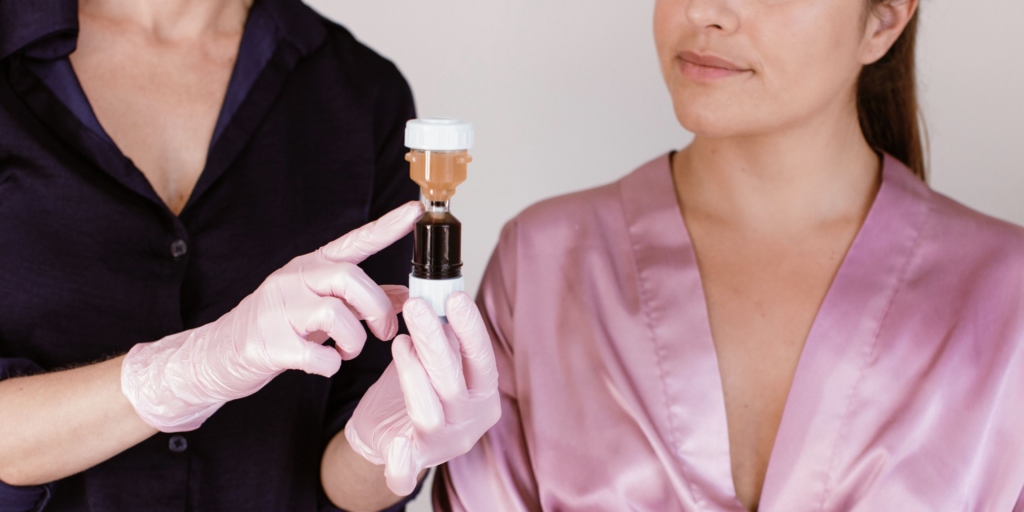 Seeing that PRP comes from our own bodies, the risks are dramatically reduced, making it a very safe (and sought-after) procedure… The most common risk factors include bruising, redness, and swelling.
Seeing that PRP comes from our own bodies, the risks are dramatically reduced, making it a very safe (and sought-after) procedure… The most common risk factors include bruising, redness, and swelling.
7. LED light therapy can cause UV damage
Now this is a skincare myth that I hear so often!
LED (light emitting diodes) lights emit visible light through wavelengths between 400-700 nanometres which is not harmful to a human’s health. While UV (ultraviolet) rays are invisible light with considerably lower wavelengths ranging from 10-400 nanometres. Two completely different types of light technology!
UV rays can be categorized into UVA which is also known as the ‘ageing’ rays and UVB the ‘burning’ rays, both UVA and UVB are responsible for the cause of skin cancers. Applying a sun protection factor every 2 hours when outdoors will help prevent sun damage, reduce premature ageing, and might also save your life.
LED light therapy is extremely beneficial to skin health and we apply it in all our signature skincare treatments to help optimise skin healing and regeneration.
8. CO2 fractional lasers provide the same results as other skin lasers
CO2RE Fractional Lasers are in a class of its own, and this is why:
CO2 is a much more aggressive approach to skin laser treatment. The difference between CO2 and other laser devices is that CO2 uses carbon dioxide to target the water molecules in the skin. This action caused vaporization as a result removing the outermost layers of the skin making this the most ablative laser on the market. A lighter setting can be used, but with a deep CO2 fractional laser procedure, the skin can take up to 3 months to heal (compared to the 5 – 10 days recovery time of Erbium laser treatments).
9. Depigmentation treatments are purely cosmetic
Depigmentation treatments for Melasma and hyperpigmentation can be very successful when done correctly. Understanding that the pigment is situated in the basal layer of the epidermis, we know that the only way to achieve long-lasting results is with a more aggressive approach.
For severe cases of Melasma (hormonal pigmentation), the leading depigmentation treatments are Cosmelan or Dermamelan from Mesoestetics. This clinical treatment is specifically formulated to not only depigment the skin at the surface level but also treat underlying causes for truly exceptional and lasting results. It effectively removes and brightens dark patches, resulting in a brighter, smoother, and more even complexion. Even though this treatment really works, and the results are incredible, it requires a lot of dedication and discipline from the patient for a few months afterward.
10. Microneedling can achieve the same results as skin lasers
Microneedling and skin lasers are two very different modalities treating different conditions or concerns on the skin.
Micro-needling is also known as collagen induction therapy where tiny micro-injuries are created without damaging the top layers of the skin. This then stimulates healthy collagen and elastin to improve and maintain youthfulness.
Skin lasers on the other hand make use of concentrated beams of light to target specific skin conditions. Lasers can be ablative (causing damage to the surface of the skin) or non-ablative and can provide drastic results that can last for years.
Final thoughts
To achieve your ultimate skin care goals, we highly recommend sticking to skincare treatments that are supported by scientific evidence. It really is best not to blindly believe everything we read and see… Rather consult with a trusted and experienced skin care professional who can advise you on the best possible solutions to help you achieve and maintain the skin of your dreams, without the fuss.

